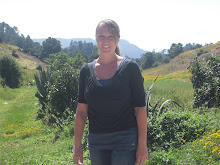Circle processes are one of the cornerstones of restorative justice. There are a variety of specific purposes that circles can be used for -- talking circles, sentencing circles, re-entry circles, etc. Such processes have been used for many years among indigenous communities around the world. The beauty of the circle is that it allows for a special time for each member of the circle to speak, while everyone else listens. Although it may seem simple, it is powerful.
Typically, a circle begins with one person introducing a talking piece, which is then passed on one-by-one so that each member of the circle has an opportunity to speak. Only the person with the talking piece may speak; everyone else listens. The circle may go around once, or it may go around many times. One of the keys of circle processes is that wisdom, knowledge, and ideas are pooled and shared. Another is that the process allows time for anger or intense emotions to cool down while one waits for their turn to respond. It also brings various resources to bear on a particular issue or problem.
But the most powerful aspect of circles that I have been a part of is that the process itself cultivates empathy among the group members. Listening to other people’s thoughts, struggles, and experiences humanizes them, and highlights the commonalities of human experiences. And really, this is the key to creating more just, peaceful approaches to responding to crime. According to Howard Zehr, “a central goal of restorative justice is to reduce social distance and ‘othering,’ thus increasing possibilities for empathy, accountability, and dialogue.”
I just completed a month long course about restorative justice facilitated by Proderecho in Oaxaca. Every morning, we began the day with a “circulo de paz.” During these circles, we spoke about our families, friendships, health, hopes, and struggles. Over the course of the month, deep connections were formed through this process. One of the most powerful aspects of this experience was that the participants in this course included employees of the government’s prosecuting agency, as well as community members who struggle against the corruption and abuse within this very agency. Participants entered the course with deep sentiments of distrust. By getting to know each other as individuals – through the circle process – these feelings of distrust, anger, and pain dissipated.
Circles help us to express the truest, most divine aspects of ourselves – and help us to identify those aspects of other people as well. In the practice of yoga, people often end a class by saying “Namaste.” I have heard this translated to mean “the divine in me salutes the divine in you.” Underneath our human exteriors, there is a divine essence within each of us that is good – that is deserving – that is human. Remembering this – even when people do things that are wrong – is so important. Circle processes facilitate this recognition.
Namaste




No comments:
Post a Comment